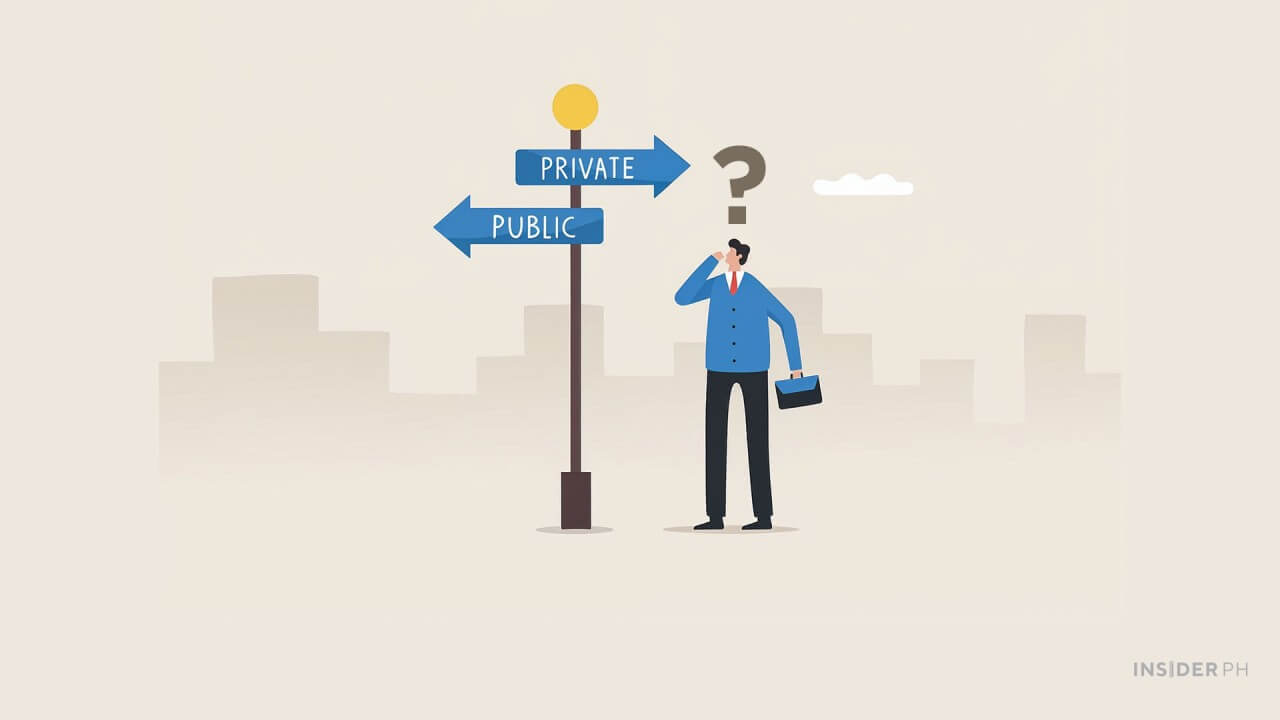

Once the problem is identified, the gaps assessed, and a value-for-money analysis conducted, the next critical step is selecting the appropriate implementation route.
Involve the private sector or not?
The first decision point is whether to involve the private sector or to undertake the project through direct administration. If a national government agency, government-owned or -controlled corporation, government instrumentality, or local government unit opts to involve the private sector, it may choose among three legal and permissible options: Procurement, Public-Private Partnership (PPP), or privatization.
What counts as public procurement?
Procurement. When a government agency has available funds and intends to procure an infrastructure project — such as a road, bridge, hospital, or water distribution facility— from a private contractor, this falls under public procurement.
The governing law is Republic Act No. 12009, also known as the National Government Procurement Act (NGPA), which amends R.A. No. 9184 or the Government Procurement Reform Act. The NGPA took effect on Aug. 13, 2024.
Under the NGPA, government agencies acting as procuring entities may utilize competitive bidding, limited source bidding, competitive dialogue, and other authorized modes of procurement.
Unsolicited proposals are not allowed. Awards are made to proponents with the Lowest Calculated Responsive Bid (LCRB), Most Economically Advantageous Responsive Bid (MEARB), or Most Advantageous Responsive Bid (MARB), depending on the mode and criteria adopted.
When to use PPPs
Public-Private Partnership (PPP). If a government agency seeks to collaborate with a private proponent who will finance, design, construct, operate, and maintain (or any combination thereof) infrastructure or development projects typically delivered by the public sector, then the appropriate route is a PPP.
The governing law is Republic Act No. 11966, or the PPP Code of the Philippines, which took effect on Dec. 23, 2023. For arrangements not covered by the PPP Code, such as joint ventures and leases purely for commercial use, agencies may adopt their own policies and guidelines consistent with applicable laws.
PPP arrangements include but are not limited to Build-Transfer (BT), Build-Operate-Transfer (BOT), joint ventures, and lease agreements. Competitive selection (bidding) or competitive challenge (unsolicited proposals) may be used in selecting the private partner.
In a bidding exercise, the Most Responsive Bid is awarded the project. In a competitive challenge, the Original Proponent has the right to match any superior offer.
When privatization is the right choice
Privatization. When the government intends to sell, convey, or assign assets with the goal of transferring ownership to the private sector, it may opt for privatization.
These assets may include real or personal property, receivables and other obligations due to government institutions, shares of stock and other investments, or the government institutions themselves.
This process is known as privatization and disposition. It is governed by the Guidelines on the Privatization and Disposition of Government Assets issued by the Privatization Council, effective March 11, 2025. Disposal may occur through public auction, negotiated sale, or unsolicited proposals, subject to the Council’s approval.
No one-size-fits-all, but the public good comes first
The choice among the three Ps rests on the sound discretion of the government agency. There is no one-size-fits-all solution. However, the common and unchanging goal remains: to advance the public good.

Contributor

